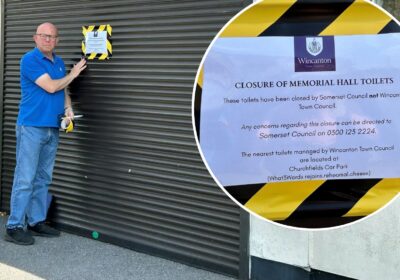ANYONE that uses public toilets in Dorset will soon have their toilet breaks tracked by the council.
Sensors are being introduced to both public toilets and libraries in the county as part of efforts to better understand how and when they are used.
Information gathered will help maintenance teams respond more efficiently to cleaning needs.
Dorset Council is keen to get the message across that the information gathered will remain anonymous and that the public’s privacy will be fully protected with the scheme.
These sensors have already been installed at Dorchester Library at entrances, desks and help counters to anonymously track how people move through the building.
This helps the council to understand what areas are used most, how long people are staying and where improvements might be needed.
READ MORE: 64-acre solar farm planned for land between Shaftesbury and Gillingham
READ MORE: Suspended sentence for cocaine-carrying man who crashed car on busy road near Dorchester
The next phase will see these sensors rolled out at public toilet entrances.
The small and discreet sensors do not contain cameras, microphones, or any technology capable of identifying individuals.
They detect only movement or body heat – never images, audio, or personal data. All data collected is anonymous and used solely to improve public services, the council said.
The sensors connect to a special network called LoRaWAN – a low-power, long-range system that Dorset Council has made available for others to use.
Local businesses, schools, and innovators can access this network to monitor things like energy use, deliveries, or footfall.
Councillor Ryan Hope, Dorset Council’s cabinet member for customer, culture and community engagement, said the sensors are a “great example” of how the council is using tech to improve its services.
“By understanding how our buildings are used, we can make better decisions, enhance customer experience, and reduce costs,” he said. “It’s also a fantastic opportunity for local businesses to benefit from the same technology through our open Internet of Things (IoT) network.”
Other councils, including Norfolk and Oxfordshire, have already seen success with similar technology – using IoT to improve road safety, monitor building temperatures, and support independent living.










Leave a Reply